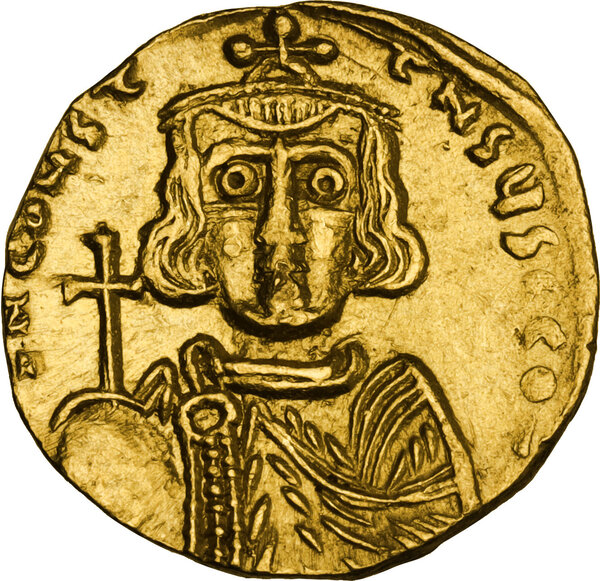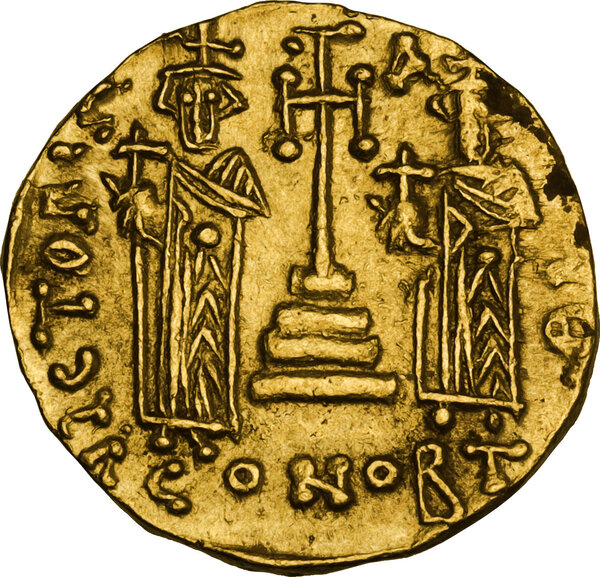Excessively Rare Solidus


Lot 634:
Constantine IV Pogonatus, with Heraclius and Tiberius (668-685). AV Solidus, Constantinople mint. Obv. ∂N CONST- TNSЧS C COS. Facing bust of Constantine IV, youthful, beardless, with long hair, wearing chlamys pinned at right shoulder and crown surmounted by cross, holding globus cruciger. Rev. VICTORIA [AVςЧ] Θ. Standing figures of Heraclius, on left, and Tiberius, both wearing chlamys and holding globus cruciger, flanking central cross potent on three steps; in exergue, CONOBT. D.O. -; MIB 3B; Sear 1147A; BMC -; T.-; R.-; SNG BN -. 4.51 g. 18.50 mm. RRR. Extremely rare. Overweight flan, despite clipped edge, possible ‘al-marco’ weight adjustment. Brilliant and superb, with underlying luster. About EF. Constantine I, the eldest son of Constans II, he faced a host of crises upon his accession, mainly the loss of the Empire's richest provinces, the decimation of the Byzantine navy, and a badly depleted set of resources and options. He fought back with energy and ingenuity, preparing Constantinople for the inevitable siege that commenced six years after his accession, in AD 674. There the Byzantines unleashed their 'secret weapon,' Greek Fire, an incendiary mixture that could be projected through tubes as with a modern flame-thrower. It caught the Arab fleet utterly unprepared and caused the first great Muslim defeat since the Hijra. Constantine's army also defeated the Arabs on land in Asia Minor and forced the Caliph to sign a 30-year peace treaty on terms favorable to the Byzantines. Constantine had to cede much of the Balkans to the new Bulgarian tribe, however, a development that boded ill for the future. One of the best of the early Byzantine rulers, Constantine died young at age 33, leaving the throne to his mercurial son Justinian II. (Heritage 3035, 2014, 29449 note).
Start price € 1000
Current price € 1400
Bids: 5
No more available for sale.
Current price € 1400
Bids: 5
No more available for sale.





